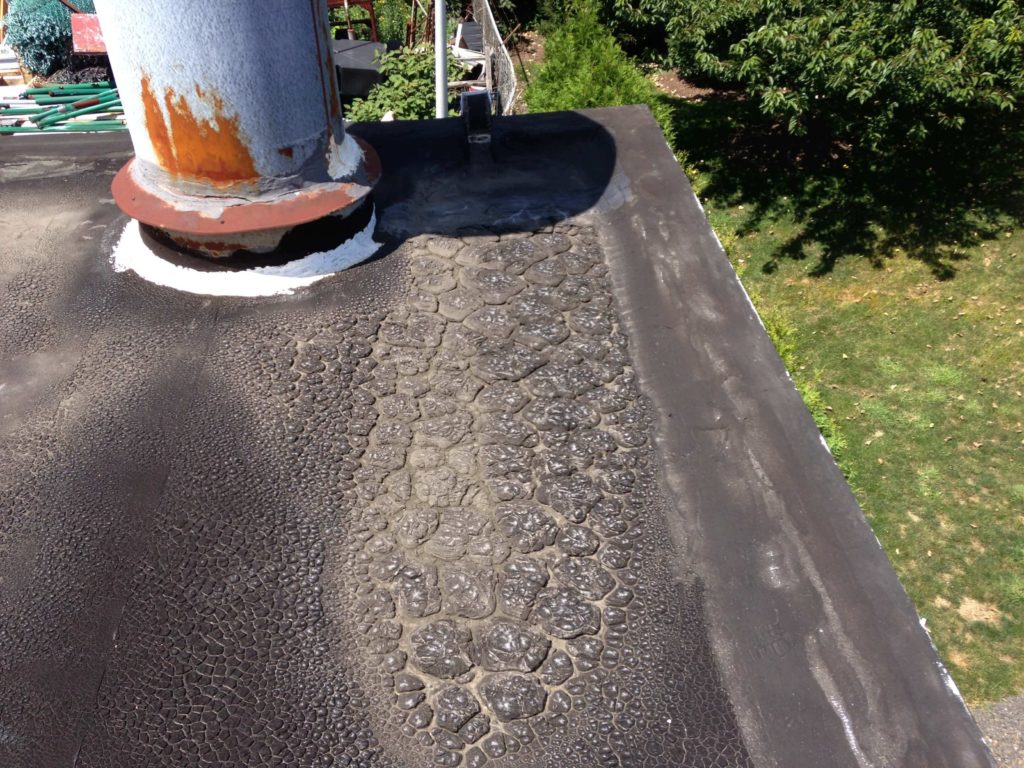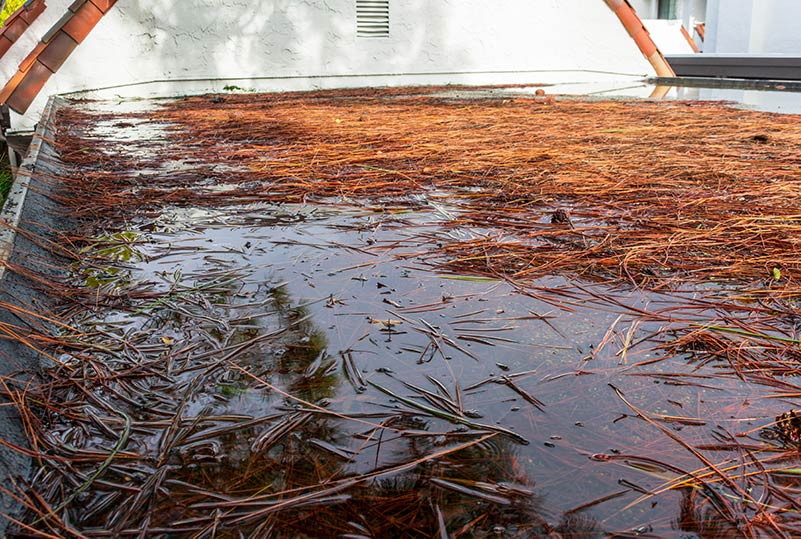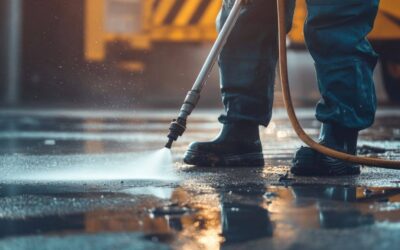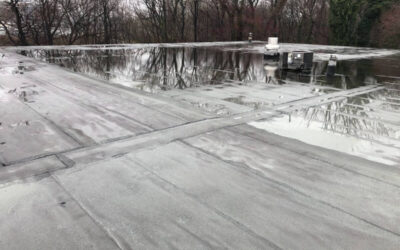What are some of the signs your flat roof needs repair or maintenance?
Generally, for all roof types, if you are having a leak, you need a repair. The purpose of a roof is to keep the rain out, not let it in. If you are getting water in the building, it’s time for a repair.
Maintenance is crucial for the longevity of your roof. All roof types need some kind of maintenance. Examples of maintenance include cleaning the drain areas, cleaning the gutter areas, and power washing the roof every five to seven years. Removing excess dirt and debris allows the roofing professional to visually inspect the roof, and it keeps the white roof white so it gets the thermal performance you expect. Other signs and things to look out for are specific to each roof type.
Signs Vary By Flat Roof Material
There are three major flat roof types: metal, single-ply, and asphalt. There is also a fourth, lesser-known bonus category which I’ll mention in the closing of the article.
The signs and symptoms of your roof being in need of repair will vary depending on the type of roofing material used – metal, asphalt, single-ply membrane, and foam and coated roofs.
Metal: Signs and Symptoms
Corrosion
Rust and a metal roof do not belong together. If your metal roof is developing rust you need to consider a maintenance coating. There are two options. You can prime and paint the metal roof to stop the rust and protect the metal panel or, you can fully waterproof the roof with a roof coating system. This will not only stop the rust, some roofers also offer the added benefit of a No Dollar Limit (NDL) roof to warranty against future leaks.
Fasteners
If your metal roof has exposed fasteners, they can develop leaks over time. The fastener has a washer that degrades in the UV light. If you are experiencing leaks from the fasteners you can either replace them with new fasteners, or you can install a roof coating system on the roof. When putting on the coating system, fasteners are tightened and the roofing contractor will add a “Hershey kiss” of mastic coating over the top, eliminating any potential future leak.
Asphalt: Signs and Symptoms
“Alligatoring”

Surface “Alligatoring” Shows Uneven Wear and Tear
Asphalt roofs can develop severe cracking that can resemble an alligator’s back. This is the result of UV light and expansion and contraction with temperature changes. Sometimes the cracking causes leaks, other times not. Some manufacturers require aluminum coatings to be applied as a preventative, sacrificial layer on the top of the roof. You can look to a more long-term solution with silicone roof coatings.
Delamination
The layers of the asphalt roof can delaminate or separate from one another. Delamination compromises the integrity of the roof system and, if left unchecked, leaks can develop. If it is isolated, those areas can be cut and patched. If it is systemic, you may need a new roof.
Single-Ply: Signs and Symptoms
Bridging
EPDM roofs are less dimensionally stable long term, they tend to shrink over time. This causes bridging to happen at the transition areas. Bridging is where the single-ply membrane shrinks and pulls away from both the vertical flashing surface and roof. The affected areas generally can be cut and relaxed, and new material installed.
Sheet Degradation
Nothing lasts forever. If you can see the mesh scrim in your single-ply roof, it’s time for a new roof. Or, if it’s just weathered you may be able to coat the roof.
Chemical Degradation
Certain chemicals can react with a single-ply membrane and warp or distort it. Those areas should be cut out and new material installed.
Foam and Coated Roof: Signs and Symptoms
These are flat roofs that are made up of closed-cell polyurethane foam insulation, coated with a roof coating (traditionally either silicone or acrylic). They are sort of the bastard step-children in the industry. Most roofing companies don’t install this type of roof because you need specialized equipment to apply the polyurethane foam. On the other hand, there are companies that do install these systems, and customers have realized great savings on their properties when they were correctly and appropriately installed.
Delamination
Sometimes the foam may “pop-up” from the roof surface. Generally, this means either there was some latent moisture in the substrate, or the substrate is itself delaminating. Those areas should be cut out and re-foamed.
Water Absorption
Roof foam should not absorb water. If your roof is absorbing water, that is a sign it was off ratio when applied. Those areas should be cut out and re-foamed.
Conclusions
The take-away here is the importance of routine maintenance. I recommend spring and fall roof inspections. After the freeze/thaw cycle, a springtime inspection can reveal any problems that the winter weather may have created on your roof. After the leaves are down in the fall, it’s important to make sure that your gutters and drains are clear.
Attention should be paid to the visual appearance of the roof (looking for signs outlined above), and physical inspection of the seams should be done at that time as well. By having a maintenance program, you will be able to catch small deficiencies before they become major problems.












Add your first comment to this post